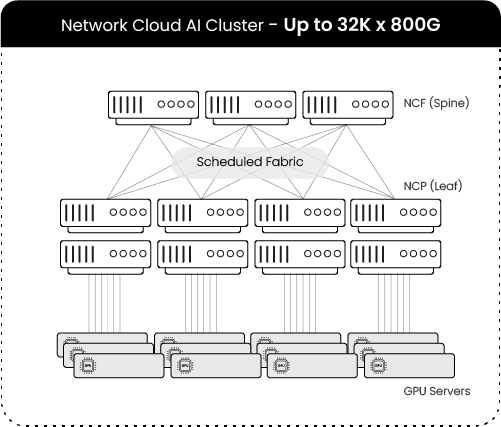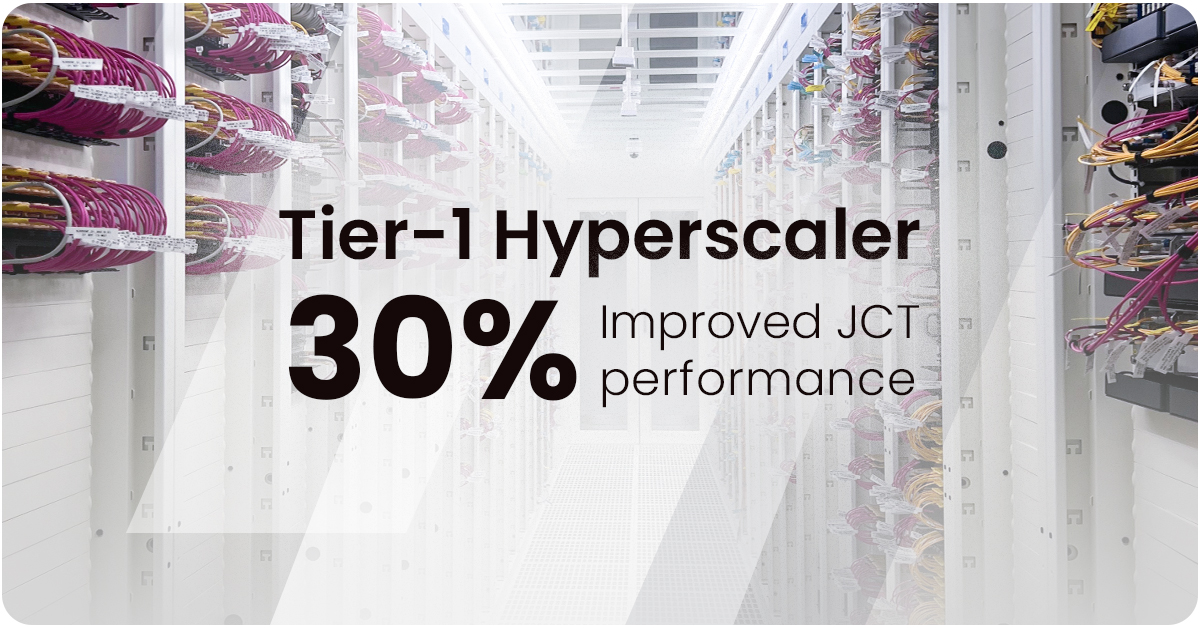Blog
As AI clusters scale from thousands to hundreds of thousands of GPUs, the choice of network fabric, InfiniBand or Ethernet,...
Read moreDriveNets Network Cloud-AI offers the highest-performance lossless Ethernet solution for AI networking back-end fabric. Its performance was tested and shown to equal that of InfiniBand, yet with standard Ethernet and faster deployment time.
DriveNets Network Cloud-AI:

AI fabric is the networking instance that connects the graphics processing units (GPUs) in a training or inference GPU cluster.


DriveNets Network Cloud-AI and the breakout capabilities of NCP5-AI leaf switches
| Supplied by variety of original design manufactures (ODMs) | |||||||||||||||||||||||||||||||
|
|
|
||||||||||||||||||||||||||||||
| Hardware Specifications | |||||||||||||||||||||||||||||||
|
|||||||||||||||||||||||||||||||
| Supplied by variety of original design manufactures (ODMs) | |||||||||||||||||||||||||||||
|
|
|
||||||||||||||||||||||||||||
| Hardware Specifications | |||||||||||||||||||||||||||||
|
|||||||||||||||||||||||||||||
DriveNets Network Cloud-AI supports up to 32,000 GPUs (with 800Gbps connections) in a single cluster. With InfiniBand-level reliable connectivity, low latency, and practically zero jitter using the DDC cell-based, scheduled fabric technology, the solution maximizes network utilization and improves JCT performance by up to 30% compared to other Ethernet solutions. Moreover, it does not require expensive and power-hungry DPUs
DriveNets Network Cloud-AI offers an open architecture with high performance, adapting to changing models and network requirements. It ensures interoperability through Ethernet and remains vendor-agnostic across all hardware domains, allowing the use of any GPU and SmartNIC/DPU.
DriveNets is the sole vendor with a proven implementation of a large-scale scheduled fabric. Scheduled fabric is recognized as the highest performance solution by both Arista (DES) and Cisco (DSF). While their solutions are at early stages of deployment, DriveNets Network Cloud has powered the world’s largest DDC network for more than five years. DriveNets also has demonstrated remarkable AI workload performance and scalability in production implementations and field trials conducted with top hyperscalers.
Blog
As AI clusters scale from thousands to hundreds of thousands of GPUs, the choice of network fabric, InfiniBand or Ethernet,...
Read moreBlog
ChatGPT was introduced on November 30, 2022. Since then, AI (artificial intelligence) has become the most used buzzword across virtually...
Read more